BER/BERAC
-
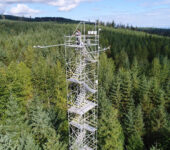
AmeriFlux Tower in British Columbia
Ca-Ca3 AmeriFlux Tower in British Columbia.
-
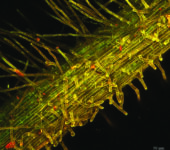
Rhizosphere Microbes Colonizing Poplar Roots
Characterizing Plant-Microbe Interfaces. This confocal image shows the microbial isolate Variovorax CF313 (green) colonizing transgenic Populus PdKOR roots. Better understanding of the symbiotic relationships between organisms can help researchers engineer hardier bioenergy crops and more productive ecosystems.
-
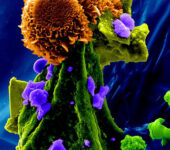
Magnification of Olivine Forsterite
Magnified view of the mineral olivine forsterite.
-
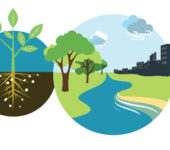
Biological and Environmental Research
BER research seeks to understand the fundamental biological, biogeochemical, and physical principles needed to predict a continuum of processes occurring across scales, from molecules and genomes at the smallest scales to environmental and Earth system change at the largest scales.
-
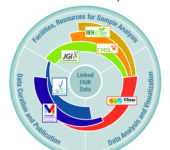
BER Facilities for Data and Analysis
Biological and Environmental Research program researchers and facilities produce a wealth of data for predictively understanding complex biological systems. To fully leverage this data, Biological Systems Science Division is supporting integrative computational and data science platforms to facilitate community access, analysis, and sharing of omics, imaging, and other data types.
-
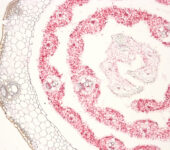
Brachypodium Imaging
Researchers at the Great Lakes Bioenergy Research Center determined where mixed-linkage glucan (MLG), a polymer of glucose, is produced in grasses and which genes are responsible for that production.
Researchers expressed BdTHX1 (red, immunolabeling), a transcription factor that plays an important role in the production and restructuring of MLG, inside the elongating leaf and leaf sheath of the model bioenergy grass Brachypodium.
-
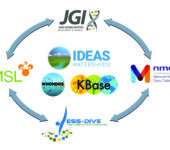
Connecting Resources and Capabilities
Resources and Capabilities Need to be Connected. There is significant need, as well as opportunities, to build formal, robust connections among capabilities supported by the U.S. Department of Energy’s Biological and Environmental Research program (BER) that include data generation, data archiving, and analytics and modeling. Watershed system science would advance more rapidly with a deeper mechanistic foundation if connections were built across BER capabilities, in addition to other agencies. Doing so will require sustained focus, particularly in terms of new cyberinfrastructure.
-
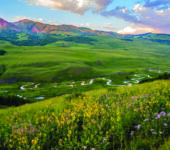
East River Watershed
East River watershed in upper Colorado River Basin.
-
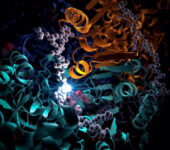
Enzyme Enoyl-CoA Carboxylase
Artist interpretation of the enzyme enoyl-CoA carboxylase/reductase.
-
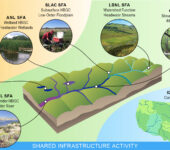
IDEAS Watersheds Community-Based Approach
The Interoperable Design of Extreme-scale Application Software (IDEAS)–Watersheds project seeks to enhance scientific productivity by adapting modern software engineering tools, practices, and processes to build a flexible scientific software ecosystem. Six major research activities, or Science Focus Areas (SFAs), address important scientific challenges, provide community research resources, and foster interagency collaboration. IDEAS-Watersheds aims to advance systems-level understanding of how watersheds function and to translate that understanding into advanced, science-based models of watershed systems.